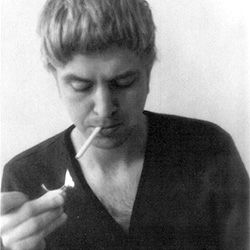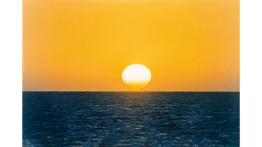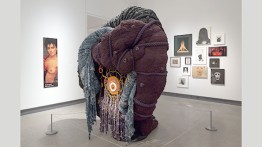A Dual Exhibition at Metropolitan Museum for Piotr Uklanski A'95
POSTED ON: April 21, 2015
Piotr Uklański A'95 has landed an impressive dual exhibition at the Metropolitan Museum of Art with two related shows that share the title "Fatal Attraction." The first, Fatal Attraction: Piotr Uklański Photographs" is a survey of his photographic works from 1990 to 2014. The second, “Fatal Attraction: Piotr Uklański Selects from the Met Collection,” shows off his curatorial skills as he picks from among the museum's holdings and mixes in some of his own works as well. The dual show will be open until June 14. The exhibition of photos continues until August 16.
 Piotr Uklanski's senior photo from 'The Cable,' 1995
Piotr Uklanski's senior photo from 'The Cable,' 1995
Born in Poland in 1968, Piotr Uklański first established a name for himself immediatly after graduating from the School of Art. His "Untitled (Dance Floor)," from 1996, lit up colored squares under the feet of patrons at Passerby, a bar run by Gavin Brown of the Gavin Brown Enterprises gallery, which represented him at the time. An artist that works in many different mediums, he is frequently refered to as a provocateur, as in this interview with him on Artspace.
In her March 20th feature review of the paired exhibitions, The New York Times' senior art critic Roberta Smith describes Mr. Uklański as a "latter-day Conceptualist with an unusually robust feeling for materials, scale and knockout visual effects, as well as a taste for the perverse. … He divides his interests among photography, painting, sculpture, film, installation and performance. All these art forms harbor undercurrents of satirical intent, evocations of sex and death, and frequent references to Polish art and politics, and are riddled with unexpected intimations of sincerity."
The photography exhibition includes -- perhaps suprisingly and perhaps not -- a large scuplture. It "almost steals the show," according to Roberta Smith. "An enormous, somewhat grotesque clot of dyed rope, fiber, macramé and embroidery 10 feet high, this dark crusty form intimates a burned-out planet until you recognize its one spot of bright color as a pupil. It is an eye, and it echoes the many images of eyes and semblances of eyes throughout both shows. Possibly ripped from its socket, and perhaps rotting, this monumental three-dimensional version nonetheless evokes the act of looking as irresistible, invasive and voracious — especially where photography is concerned.”







